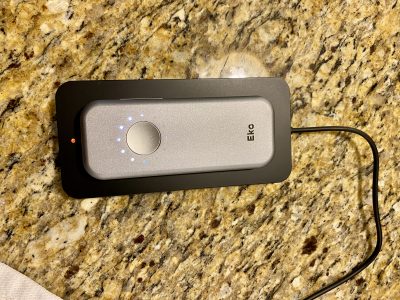In the email today comes an abstract from "J Am Med Inform Assoc. 2006;13:261-266", entitled "Return on Investment for a Computerized Physician Order Entry System". I’m going to put the whole thing in the extended entry, but here’s the Results section, and I wonder if you see the same thing I did:
Results: Between 1993 and 2002, the BWH spent $11.8 million to develop, implement, and operate CPOE. Over ten years, the system saved BWH $28.5 million for cumulative net savings of $16.7 million and net operating budget savings of $9.5 million given the institutional 80% prospective reimbursement rate. The CPOE system elements that resulted in the greatest cumulative savings were renal dosing guidance, nursing time utilization, specific drug guidance, and adverse drug event prevention. The CPOE system at BWH has resulted in substantial savings, including operating budget savings, to the institution over ten years.
Answers are invited in the comments.
Return on Investment for a Computerized Physician Order Entry System
J Am Med Inform Assoc. 2006;13:261-266
February 24, 2006
—————————————————————————-
—-
Technology Evaluation
Rainu Kaushal, MD, MPH, Ashish K. Jha, MD, Calvin Franz, PhD, John Glaser, PhD, Kanaka D. Shetty, MD, Tonushree Jaggi, BA, Blackford Middleton, MD, MBA, MSc, Gilad J. Kuperman, MD, PhD, Ramin Khorasani, MD, MPH, Milenko Tanasijevic, MD, MBA, David W. Bates, MD, MSc Brigham and Women’s Hospital CPOE Working Group
Affiliations of the authors: Brigham and Women’s Hospital and Harvard Medical School, Boston, MA (RK, AKJ, TJ, BM, RKh, MT, DWB); Department of Public Health, Weill Medical College of Cornell University, New York, NY (RK, GJK); Department of Health Policy and Management, Harvard School of Public Health, Boston, MA (AKJ); Eastern Research Group, Inc., Lexington, MA (CF); Department of Medicine, Columbia University Medical Center, New York, NY (KDS); Information Systems, Partners Healthcare System, Boston, MA (JG, BM, DWB).
Correspondence and reprints: Rainu Kaushal, MD, MPH, Division of General Medicine and Primary Care, Department of Medicine, Brigham and Women’s Hospital, 1620 Tremont Street, Boston, MA 02120-1613; e-mail:
<rkaushal@partners.org>.
Objective: Although computerized physician order entry (CPOE) may decrease errors and improve quality, hospital adoption has been slow. The high costs and limited data on financial benefits of CPOE systems are a major barrier to adoption. The authors assessed the costs and financial benefits of the CPOE system at Brigham and Women’s Hospital over ten years.
Design: Cost and benefit estimates of a hospital CPOE system at Brigham and Women’s Hospital (BWH), a 720-adult bed, tertiary care, academic hospital in Boston.
Measurements: Institutional experts provided data about the costs of the CPOE system. Benefits were determined from published studies of the BWH CPOE system, interviews with hospital experts, and relevant internal documents.
Net overall savings to the institution and operating budget savings were determined. All data are presented as value figures represented in 2002 dollars.
Results: Between 1993 and 2002, the BWH spent $11.8 million to develop, implement, and operate CPOE. Over ten years, the system saved BWH $28.5 million for cumulative net savings of $16.7 million and net operating budget savings of $9.5 million given the institutional 80% prospective reimbursement rate. The CPOE system elements that resulted in the greatest cumulative savings were renal dosing guidance, nursing time utilization, specific drug guidance, and adverse drug event prevention. The CPOE system at BWH has resulted in substantial savings, including operating budget savings, to the institution over ten years.
Conclusion: Other hospitals may be able to save money and improve patient safety by investing in CPOE systems.
Received for publication: 09/26/05; accepted for publication: 02/01/06.
C 2006 American Medical Informatics Association



If Brigham and Women’s is getting 80% reimbursement, I’d like to have a chat with their collections and accounting office. Either all of their patients are conscientious, hard-working people who pay their bills, or the accounting folks from Enron found a new place to roost.
Bingo! “…given the institutional 80% prospective reimbursement rate” is one heck of a ‘given’.
Wow, no wonder Mass is such a great place for teaching hospitals.
I was equally amazed by that figure… easily doubles our 35%ish collection rate (which tracks nicely with some other groups in my geographic area).
I’d LOVE to know what kind of numbers-massaging they did to come up with that.
My experience with CPOE is favorable at two different institutions for avoiding adverse drug effects and shortening the time between order writing and execution. That said, CPOE is also expensive in MD time as order entry is considerably more time consuming for the physician who now becomes unit clerk for the hospital but without any cost to the hospital. Was this cost considered?
The 80% reimbursement rate is obviously phoney baloney. But I am also curious as to what type of model they used to calculate the actual cost savings. Apparently the “CPOE system elements that resulted in the greatest cumulative savings” were “renal dosing guidance, nursing time utilization, specific drug guidance, and adverse drug event prevention”.
Those elements are obviously nice CPOE benefits to have for reducing medical errors but how could they possibly account for the bulk of $28.5 million dollars of cumulative savings over 10 years?
John